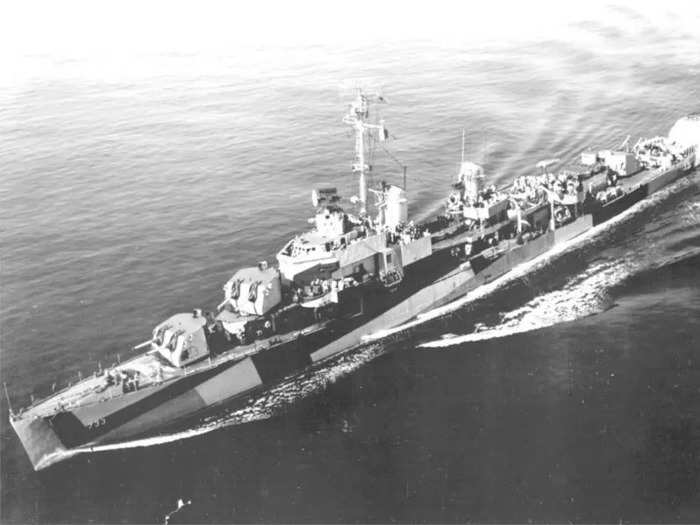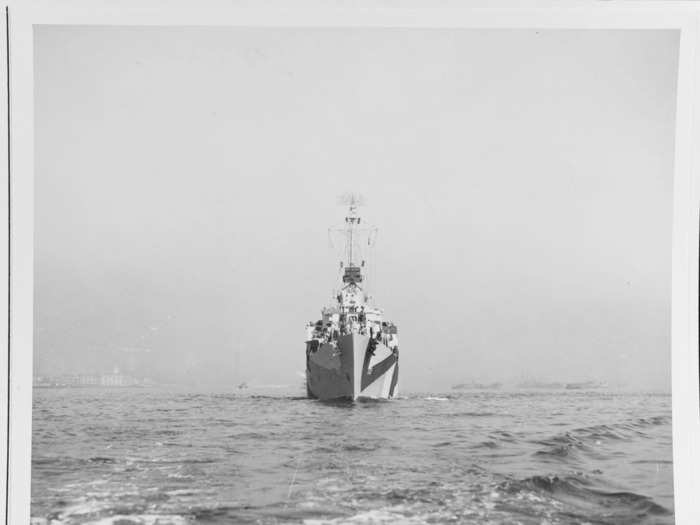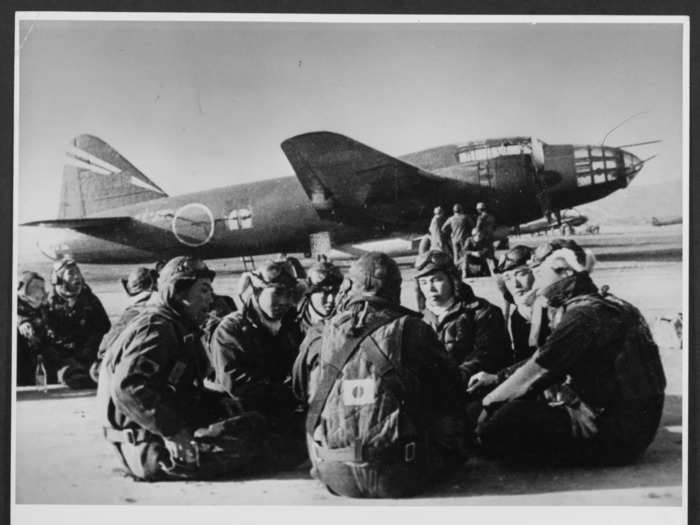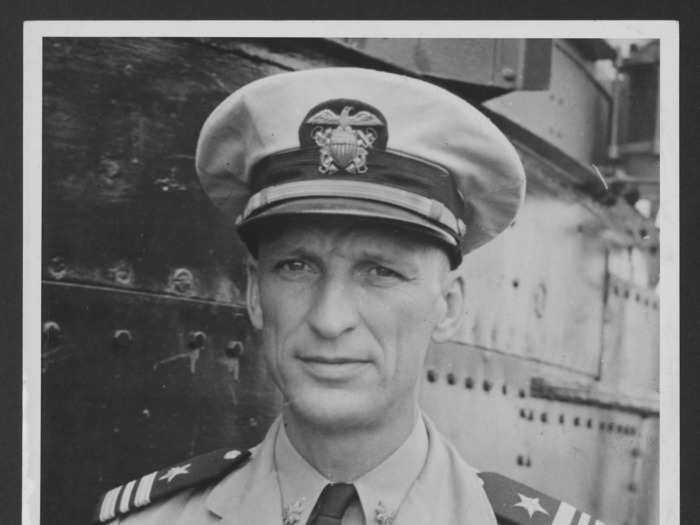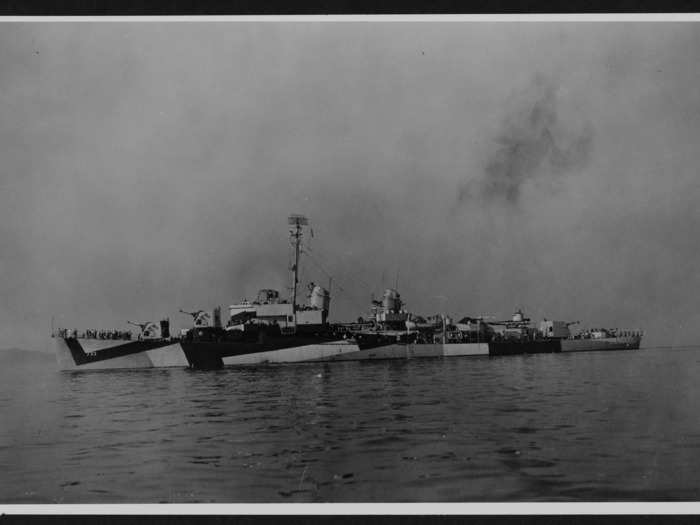The U.S.S. Mannert L. Abele sunk off the coast of Okinawa in 1945.Courtesy of the US Naval Institute.
- A group of underwater explorers discovered a long-lost sunken World War II Navy warship.
- The U.S.S. Mannert L. Abele sank off Okinawa in 1945 after being hit by two kamikaze attacks.
A group of civilian underwater explorers discovered the remains of a long-lost World War II-era warship that sunk off the coast of Okinawa nearly 70 years ago amid the Pacific War.
The precise location of the U.S.S Mannert L. Abele had been previously unknown until the Lost 52 Project — an archeological organization dedicated to finding Navy ships and submarines that sank in the Second World War — discovered the Abele in December of last year, the group told The New York Times this week.
The US Navy's Naval History and Heritage Command confirmed the discovery last month.
Official Navy photos shared with Insider show the decades-old warship as it sank in the Pacific after being struck by two Japanese kamikaze aircraft which triggered dual explosions.
The USS Mannert L. Abele sunk in the Battle of Okinawa in 1945.
The Abele was one of several warships that circled Okinawa in the waning days of the war. Courtesy of the US Naval Institute.
The Battle of Okinawa was the largest fight in the Pacific Campaign, Tim Taylor of Lost 52 Project told The Times.
The fight was the last major battle in World War II and among the most deadly. The US suffered more than 49,000 casualties, including 12,500 deaths, and the Japanese lost approximately 110,00 soldiers in the bloody fight, according to History.com.
On April 1, 1945, tens of thousands of Army and Marine Corps forces attacked the Japanese island of Okinawa in a last-ditch effort to move toward the mainland.
Taking control of Okinawa's airbases was a key step to invading Japan, and while the Allies eventually proved victorious, it came at a heavy cost.
The Abele put up a long, hard fight before succumbing to the Pacific's depths.
The Abele was especially sensitive to Japanese kamikaze attacks. Courtesy of the US Naval Institute.
The small ship was one of several war fleets that circled the Okinawa island in spring of 1945. The Abele was serving as an advance radar ship ahead of the invasion, using its technology to track incoming Japanese aircraft.
The ship, however, was especially sensitive to kamikaze attacks, which the Japanese were increasingly deploying as suicide missions near Okinawa. Over the course of multiple days, the ship fought off several Japanese attacks.
But when two Japanese planes crashed directly into the Abele's starboard side triggering dual explosions, the ship sunk to the bottom of the ocean in nearly 4,500 feet of water, according to The Times.
Eighty-four soldiers aboard the Abele were killed.
The Abele was sunk by a Japanese Ohka bomb.
The "Betty" bomber in the background is carrying an "Ohka" piloted bomb beneath its fuselage similar to the one that sank the destroyer. Courtesy of the US Naval Institute.
The Ohka was a new bomb at the time created by the Japanese that could fly through the air at speeds of 600 miles per hour.
The US airmen pictured above are relaxing in front of a "Betty" bomber seen in the background of the photo that is carrying an "Ohka" piloted bomb beneath its fuselage similar to the one that took down the Abele, Scot Christenson, the director of communications for the US Naval Institute, told Insider.
The sinking of the Abele marked one of the first successful uses of this specific type of "Ohka" flying bomb against a US ship.
Naval history describes the weapon as a "deadly flying rocket bomb" in the Japanese arsenal that was designed to inflict maximum destruction on the Allied navies.
The bombs were small and typically launched from underneath land attack planes, making them difficult to shoot down because of their high speeds.
The Abele was named after Lt. Commander Mannert L. Abele.
The warship was commissioned in honor of Lt. Commander Mannert L. Abele. Courtesy of the US Naval Institute.
The warship was commissioned in honor of Lt. Commander Mannert L. Abele in 1944.
Abele commanded the U.S.S Grunion, another Navy vessel that was lost at sea during the war.
The Navy awarded him a posthumous Navy Cross for his work sinking three Japanese ships in just one day during the war.
The sunken ship will stay where it is in the depths of the ocean.
The remnants of the sunken Abele will remain where they are. Courtesy of the US Naval Institute.
The Abele and other sunken vessels like it are considered active tomb sites of those who perished in the war.
As such, the Navy won't move or disturb the newly-discovered ship, according to The Times.

